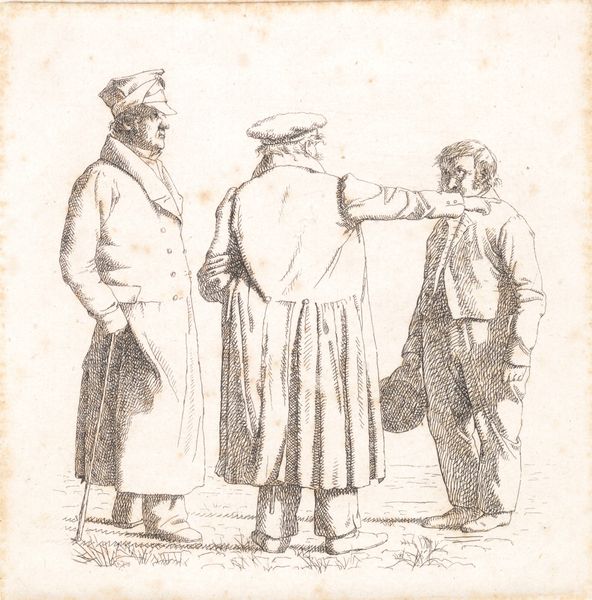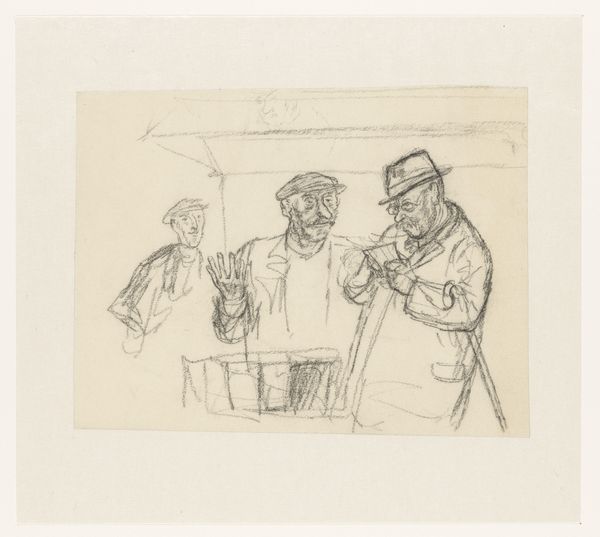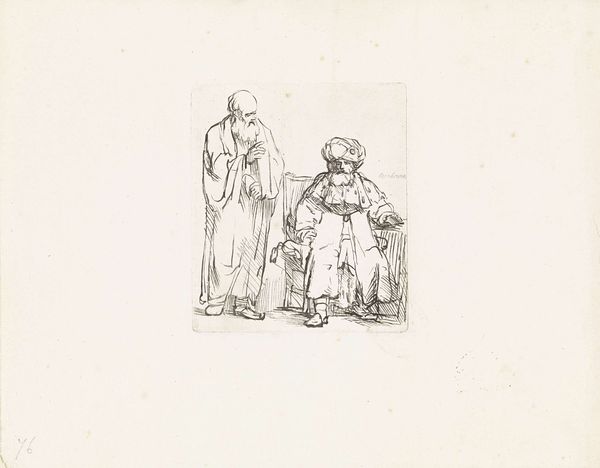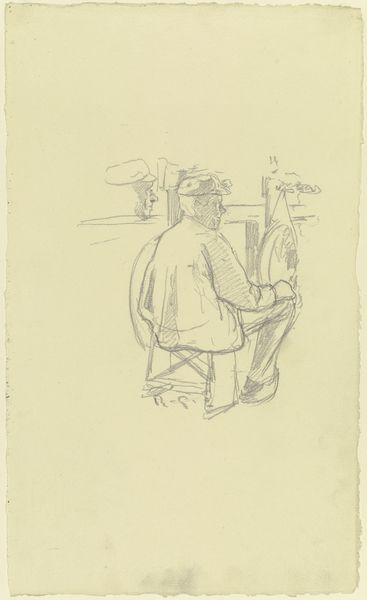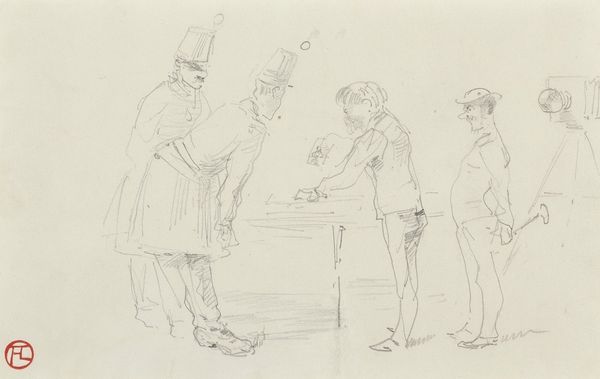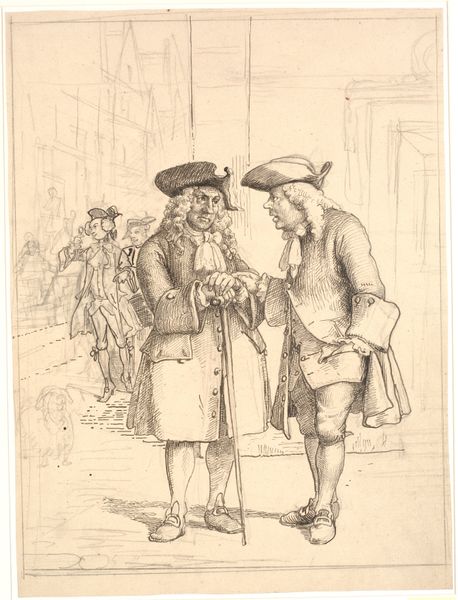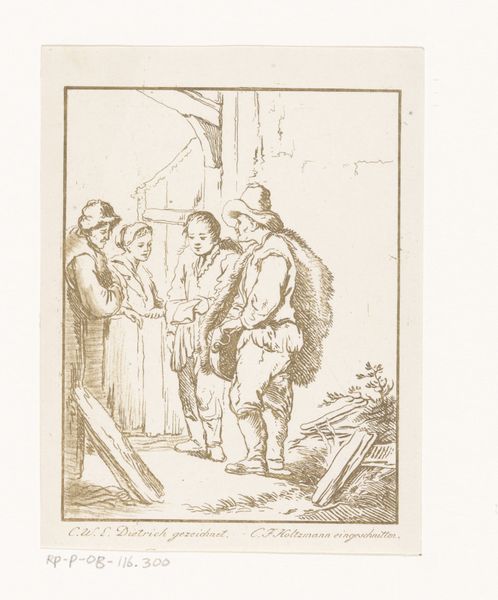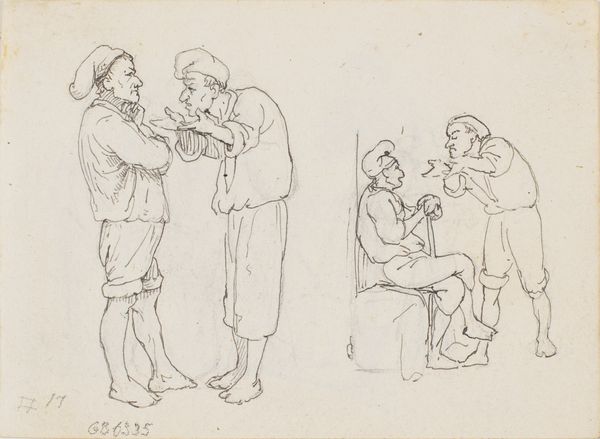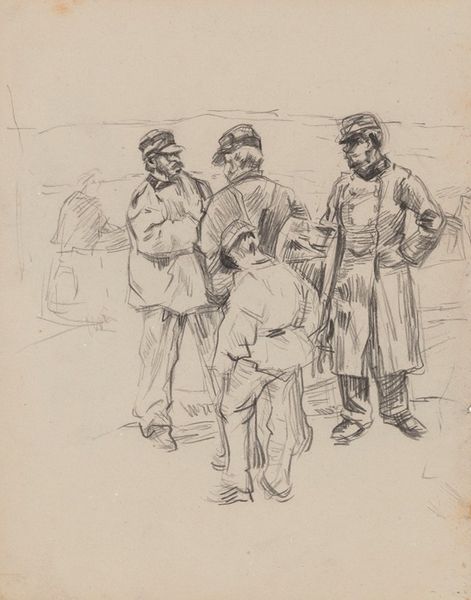
Tre personer i samtale; rygvendt i midten bagermester Købke, t.v. major Krohn og t.h. slavesergent Sprøch 1831
0:00
0:00
drawing, pencil
#
portrait
#
drawing
#
romanticism
#
pencil
#
realism
Dimensions: 118 mm (height) x 125 mm (width) (bladmaal)
Curator: This pencil drawing by Christen Købke, created in 1831, is titled "Tre personer i samtale; rygvendt i midten bagermester K\u00f8bke, t.v. major Krohn og t.h. slavesergent Spr\u00f8ch" - that translates to “Three people in conversation; baker K\u00f8bke with his back turned in the middle, Major Krohn to the left and Slave Sergeant Spr\u00f8ch to the right”. Editor: It feels strangely intimate, even unfinished. The almost casual grouping gives the sense we've stumbled upon a fleeting interaction between social classes within 19th century Copenhagen. The sparse strokes give an openness that contrasts the rather closed, defined roles the men occupy. Curator: Absolutely. Købke has documented a real moment, perhaps from his own social sphere. Let’s think about the context of the baker – here he is represented as part of the social fabric. He occupies the central space between military men. Editor: The "Slave Sergeant" is particularly loaded language. Considering the complexities of slavery and military structures of power during this time – what could that mean in relation to Copenhagen society? Who is invested in keeping the lines of hierarchy solid and fixed and who benefits from the access granted in their positions? Curator: Exactly. I’d also consider how drawing and the use of graphite offered a form of accessible artistic practice that allowed artists to capture more spontaneous moments compared to oil painting. Editor: You can see this accessible materiality in how quickly the drawing seems to render these figures, this offers such valuable access into class structures as these unfold organically day to day. The material supports that reality effect. Curator: Right! I agree – Köbke wasn't producing a grand, idealized portrait. It’s more like a material and class study that opens doors into a Copenhagen street corner. Editor: Well, it certainly makes one wonder about the unseen tensions that underscore these simple interactions and that’s often what art does best - makes visible these things that linger beneath. Curator: For sure. It allows us to pause and consider what the means of production can bring to the story.
Comments
No comments
Be the first to comment and join the conversation on the ultimate creative platform.
